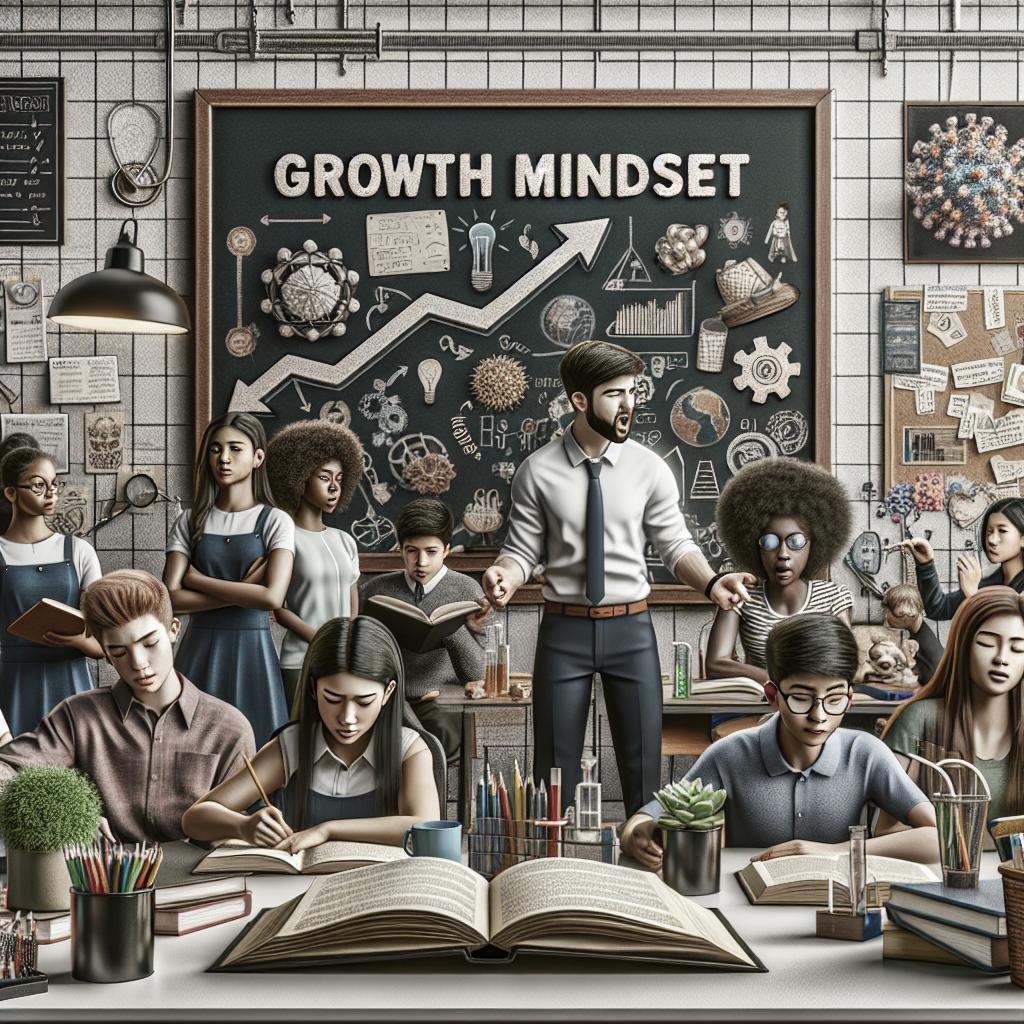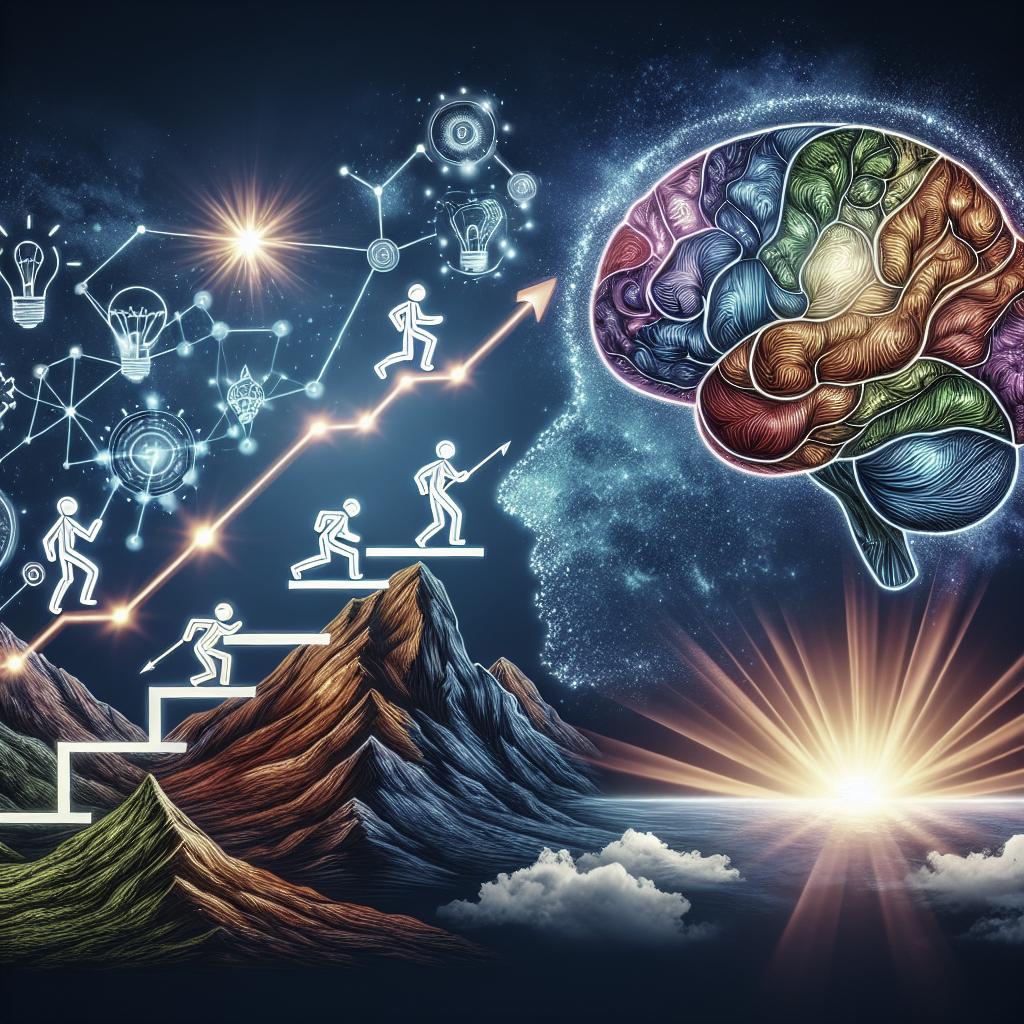Developing a growth mindset in students is pivotal for their long-term success and well-being. This mindset, popularized by the research of Dr. Carol Dweck, emphasizes the belief that abilities and intelligence can be developed through dedication and hard work. In this blog post, we’ll dive deep into who Dr. Carol Dweck is and how her work has influenced education. We’ll then explore ten practical ways teachers can foster a growth mindset in their students, from avoiding praise solely based on intelligence to incorporating gamification elements. Finally, we’ll provide a helpful infographic to illustrate these strategies visually and wrap up with final thoughts on the importance of nurturing a growth mindset in educational settings.
About Dr. Carol Dweck and Growth Mindset in Education for Students
Dr. Carol Dweck, a prominent psychologist and professor at Stanford University, introduced the concepts of fixed and growth mindsets in her groundbreaking book, “Mindset: The New Psychology of Success.” A fixed mindset presupposes that intelligence and talents are static and unchangeable traits. In contrast, a growth mindset revolves around the idea that these qualities can be cultivated through effort, strategies, and support from others. Dr. Dweck’s research has significantly shaped modern educational practices. It highlights the importance of praising process over innate ability, recognizing the value of mistakes as learning opportunities. Schools, educators, and parents have increasingly adopted her principles to evolve the ways they teach and interact with students, aiming to foster resilient, motivated, and life-long learners.
10 Ways Teachers Can Foster a Growth Mindset in Students
1. Avoid Praising Intelligence and Sheer Effort
Praising students solely for their intelligence can create a fixed mindset. Instead, emphasizing the strategies and methods they used to reach their goals encourages a growth mindset. For example, instead of saying, “You’re so smart,” a teacher might say, “You used a great method to solve that problem.” It’s also essential to avoid overpraising effort if it doesn’t lead to progress. Acknowledging effective strategies and encouraging students to try new approaches if they’re struggling can promote the idea that growth comes from learning and persistence, not just hard work.
2. Use Diverse Teaching Strategies
Diverse teaching strategies cater to different learning styles, emphasizing that there isn’t a one-size-fits-all method to solve problems. Techniques such as project-based learning, collaborative groups, and the use of multimedia resources can engage students in various ways. Varied strategies help students recognize that mastery is achievable through multiple routes. They learn to appreciate different angles to approach a problem, which reinforces the growth mindset principle of flexibility and adaptability.
3. Introduce Simple Gamification Elements
Gamification incorporates game design elements in non-game contexts, like the classroom, to motivate and engage students. Features such as points, badges, and leaderboards can incentivize students to adopt a growth mindset by rewarding persistence and incremental progress. When students view their learning journey as part of a game, they’re more likely to embrace challenges and persist through difficulties. This playful approach demystifies failure, allowing them to see setbacks as part of the fun and part of learning.
4. Teach the Values of Challenges
Challenges should be presented as opportunities rather than threats. By framing difficulties as essential parts of the learning process, educators can encourage students to tackle them head-on. Teachers can share stories about famous figures who overcame significant obstacles, reinforcing the idea that success often comes from persistent effort through challenging times. This approach helps instill resilience and a proactive attitude towards learning difficulties.
5. Encourage Students to Expand Their Answers
Instead of accepting short, incomplete answers, encourage students to elaborate on their responses. This practice promotes deeper thinking and reinforces the idea that initial responses can be built upon and refined. Asking follow-up questions and creating an environment where students feel comfortable exploring their thoughts can help them realize that learning is an iterative process. The emphasis is on continuous improvement rather than getting the answer right the first time.
6. Explain the Purposes of Abstract Skills and Concepts
Students often struggle with abstract skills and concepts if they don’t see their relevance. By explaining how these concepts apply in real-world contexts, teachers can make learning more meaningful and engaging. Connecting lessons to students’ lives and future ambitions can foster a growth mindset. When they understand the purpose behind what they’re learning, they’re more likely to invest effort and overcome challenges associated with mastering these skills.
7. Allow Time for Goal-Based Journaling
Goal-based journaling helps students articulate their learning objectives and track their progress. By regularly reflecting on their goals, students can develop a habit of self-assessment and recognize their personal growth. Journals can be a powerful tool for fostering a growth mindset, as they provide a space for students to document and analyze their challenges and achievements over time. This reflection promotes a deeper understanding of their learning journey.
8. Say “Yet” More Often
The simple addition of the word “yet” can transform how students perceive their abilities. For example, instead of saying, “I can’t do this,” they can say, “I can’t do this yet.” This subtle change in language instills a growth mindset by emphasizing that while they may not be able to do something now, they will be able to with time and effort. It reinforces the belief in the potential for growth and improvement.
9. Help Students Change Their Language
The language students use impacts their mindset. Encouraging them to use growth-oriented language can shift their perspective from fixed to growth. For example, instead of saying, “I’m not good at this,” guide them to say, “What am I missing?” By making students aware of the power of their words, educators can help them adopt a more positive and proactive approach to challenges. Language shapes thought, and promoting a growth-oriented vocabulary can have lasting effects on how students approach learning and obstacles.
10. Use Success Folders
Success folders are personal portfolios where students can store and review their best work and moments of progress. These folders serve as tangible evidence of their improvement and hard work over time. Reviewing these success stories can bolster students’ confidence and remind them of how far they’ve come. It reinforces the idea that growth is a journey and that persistence and effort lead to meaningful progress.
Growth Mindset Infographic
[Insert Infographic Here] An infographic can be a compelling way to visually summarize the key strategies for fostering a growth mindset. This graphical representation can highlight tips for students, phrases to use, and the benefits of adopting a growth mindset.
Final Thoughts about Growth Mindset in Education
In education, fostering a growth mindset can transform how students perceive their abilities and approach learning. From avoiding praise solely based on innate intelligence to encouraging goal-based journaling and success folders, these strategies can create a supportive and dynamic learning environment. Teachers, by incorporating these methods, can nurture resilient, motivated, and life-long learners who view challenges as stepping stones rather than obstacles. “`html
| Strategy | Description |
|---|---|
| Avoid Praising Intelligence and Sheer Effort | Focus on praising strategies and methods rather than innate intelligence or effort alone. |
| Use Diverse Teaching Strategies | Cater to different learning styles through varied teaching methods. |
| Introduce Simple Gamification Elements | Incorporate game design elements like points and badges to motivate students. |
| Teach the Values of Challenges | Present challenges as opportunities for growth rather than threats. |
| Encourage Students to Expand Their Answers | Promote deeper thinking by asking students to elaborate on their responses. |
| Explain the Purposes of Abstract Skills and Concepts | Connect abstract concepts to real-world applications to make them more relevant. |
| Allow Time for Goal-Based Journaling | Help students track their progress and reflect on their goals through journaling. |
| Say “Yet” More Often | Encourage the use of “yet” to reinforce the potential for growth. |
| Help Students Change Their Language | Promote growth-oriented language to shift students’ perspectives. |
| Use Success Folders | Create personal portfolios to store and review moments of progress. |
“`


